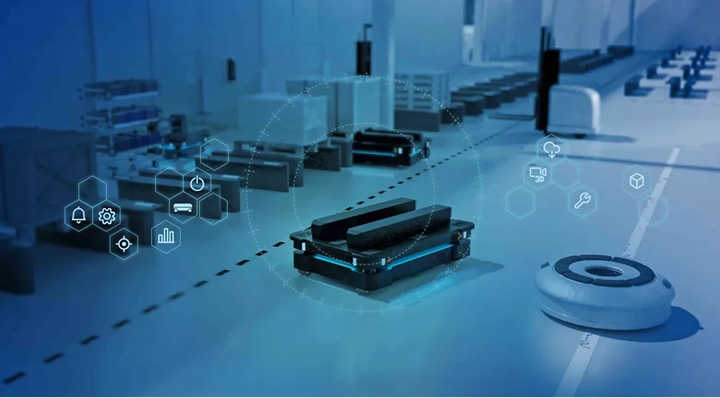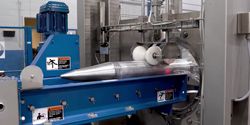Explosion-Proof Robotics in ATEX/IECEx Environments: Progress, Challenges and Practical Pathways
Industrial robotics has transformed manufacturing, logistics and maintenance across countless sectors. Yet in potentially explosive environments such as refineries, petrochemical plants, offshore platforms and battery production facilities, the picture changes dramatically.
Humanoids - Safety Standards for the Next Wave of Robots
Today's safety concerns generally boil down to physical component and perception issues. If a robot is in a rugged environment, hardware components degrade and can lead to dangerous malfunctions.
How Does Zero Trust Apply to Robotics?
By hardening your endpoints, securing your software supply chain and enforcing continuous verification, zero trust closes the most common attack paths long before they can be exploited, from development to deployment.
AUVSI Launches "Trusted UGV" Cybersecurity and Supply Chain Certification at XPONENTIAL 2025
As UGVs are increasingly deployed across a wide range of use cases-from defense and public safety missions to critical infrastructure inspection -their reliance on software, sensors, and connectivity makes them increasingly vulnerable to cyber threats and supply chain risks.
Interoperability, the VDA5050 Standard and MiR's approach
The VDA5050 standard is one of the industry's attempts to address this challenge by standardizing communication between multiple different robot types from various suppliers using a common control system.
Averting Factory Fires, Diminishing Downtime: How Thermal Imaging is Safeguarding International Production Lines
The system required a bespoke interface that could accurately test each battery for thermal runaway, and then export and transmit the data to a server to be cross-referenced and analyzed where anomalies were found to be present.
Machine Functional Safety - PL and SIL Ratings
This paper reviews the concept of Functional Safety as it relates to machinery. The design steps for a safe machine are outlined and the methodology for determining appropriate PL/SIL safety ratings discussed.
Forklift Accident Prevention: Understanding Risks and Enhancing Safety
Let's examine the risks associated with forklift operations and look at ways to use safety protocols and smart technology to enhance workplace safety and prevent forklift accidents.
ANSI/A3 R15.08-2 Safety Standard for Industrial Mobile Robot Systems and Applications Now Available
R15.08-2, the American National Standard for Industrial Mobile Robots (IMRs) - Safety Requirements - Part 2: Requirements for IMR system(s) and IMR application(s) provides safety requirements for deploying IMR systems into an industrial environment.
Global Standards for Commercial Robotics
Every business should understand the international standards for commercial robotics and the key organizations and global markets related to them. Companies in every industry worldwide are currently reaping the benefits of automation.
Safely Integrating Robots and AI Into Your Warehouse Workforce
While integrating robots and AI into our warehouses can help with production and quality assurance, care must be taken when this tech is first introduced. Managers need to familiarize their employees with these innovations..
Following the Path to AGV Safety
Although automated guided vehicles (AGVs) are, by definition, designed to run autonomously, they usually need to collaborate with people and therefore move, and react, in a safe, predictable manner.
Opinion: EU AI Act Will Stifle Robotics Innovation
Any policy that slows down the use of automation will cause operational inefficiencies. This is the last thing we need considering the global supply chain crisis.
2021 Top Article - How a Team United in Just 18 Months to Overhaul How America Destroys Its Most Dangerous Chemical Weapons
CRG Automation and its team of engineers - with specialties such as mechanical, electrical and controls -began devising custom engineered solutions, often incorporating
advanced robotics.
As the use of robotics and automation increases, so too does the need to protect these valuable assets.
The risk to humans in warehouses is well known with the UK logistics sector reporting around 28,000 non-fatal accidents at work annually but businesses are now realising the risk of safety to highly sophisticated and expensive assets noting that these too require protection.
Records 1 to 15 of 47
Featured Product

Boston Dynamics Webinar - Why Humanoids Are the Future of Manufacturing
Join us November 18th for this Webinar as we reflect on what we've learned by observing factory floors, and why we've grown convinced that chasing generalization in manipulation—both in hardware and behavior—isn't just interesting, but necessary. We'll discuss AI research threads we're exploring at Boston Dynamics to push this mission forward, and highlight opportunities our field should collectively invest more in to turn the humanoid vision, and the reinvention of manufacturing, into a practical, economically viable product.
Robotics and Automation - Featured Company

IDS Imaging Development Systems Inc.
World-class image processing and industrial cameras "Made in Germany". Machine vision systems from IDS are powerful and easy to use. IDS is a leading provider of area scan cameras with USB and GigE interfaces, 3D industrial cameras and industrial cameras with artificial intelligence. Industrial monitoring cameras with streaming and event recording complete the portfolio. One of IDS's key strengths is customized solutions. An experienced project team of hardware and software developers makes almost anything technically possible to meet individual specifications - from custom design and PCB electronics to specific connector configurations. Whether in an industrial or non-industrial setting: IDS cameras and sensors assist companies worldwide in optimizing processes, ensuring quality, driving research, conserving raw materials, and serving people. They provide reliability, efficiency and flexibility for your application.










.jpg)
.jpg)



.jpg)